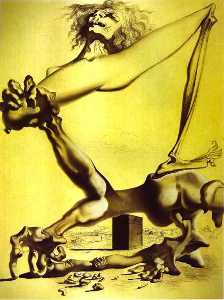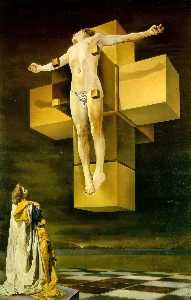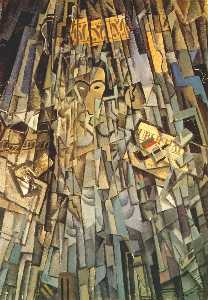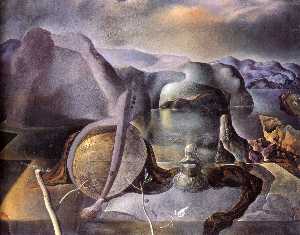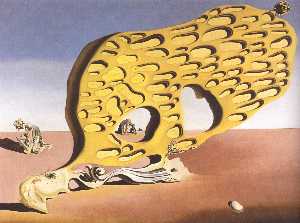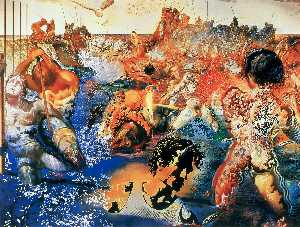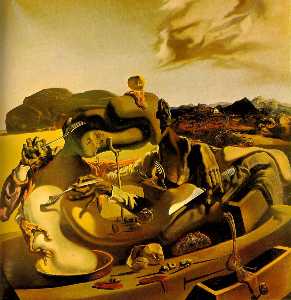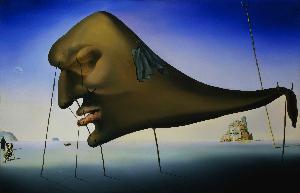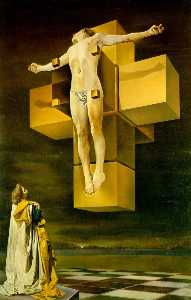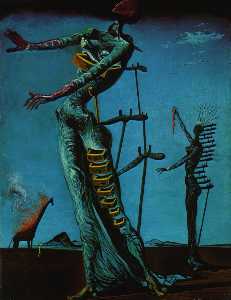Taiteilija: Salvador Dali
Tyyli: Surrealism
aiheista: Life
Tekniikka: Oil
La desintegración de la persistencia de la memoria or The Disintegration of the Persistence of Memory (oil on canvas, c. 1952 to 1954), is a painting by the Spanish surrealist Salvador Dalí. It is an oil on canvas re-creation of the artist's famous 1931 work The Persistence of Memory, and measures a diminutive 25.4 × 33 cm. In this version, the landscape from the original work has been flooded with water. Disintegration depicts what is occurring both above and below the water's surface. The landscape of Cadaqués is now hovering above the water. The plane and block from the original is now divided into brick-like shapes that float in relation to each other, with nothing binding them, the tree from which the soft watch hangs being similarly segmented. The hands of the watches float above their dials, with several conical objects floating in parallel formations encircling the watches. The distorted human visage from the original painting is beginning to morph into another of the strange fish floating above it. However, to Dalí, the fish was a symbol of life. To Dalí, this image was symbolic of the new physics—the quantum world which exists as both particles and waves. The imagery of original Persistence of Memory can be read as a representation of Einstein's Theory of Relativity, symbolizing the warping of spacetime by gravity. In this new work, quantum mechanics is symbolized by "digitizing" the old image. The painting is currently owned by the Salvador Dalí Museum in St. Petersburg, Florida.
Taiteilija |
|
|---|---|
Lataa |

